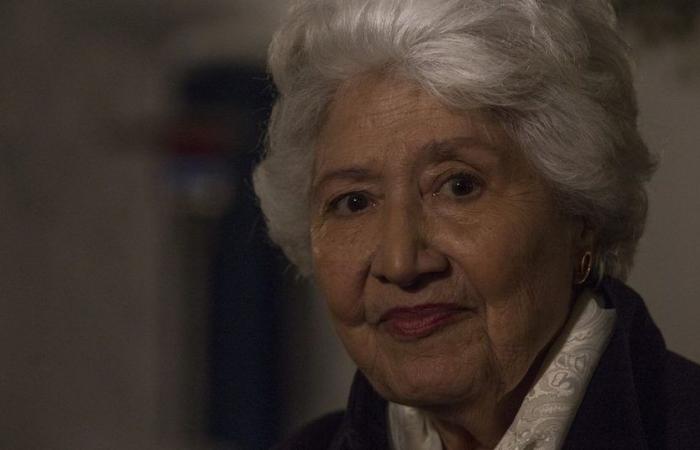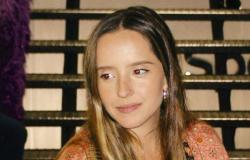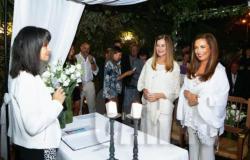He died in Buenos Aires, at 92 yearsthe great Argentine photographer Sara Facio, who shared three decades of her life with the writer and singer María Elena Walsh (1978-2011). For me, Sara Facio is not only part of the History of photographybut also of the history of Latin American literature, of the image that we have been creating of its great writers. Of all his photos, I have been especially interested in his portraits of writers and artists, but he was not limited to them, he also photographed places, cities and anonymous people, always in search of the truth, of authenticity, as he I liked to specify. He said that what he liked most about photography was what could be in it TRUE.
He trained at the National School of Fine Arts, in Buenos Aires, but in 1955, shortly after finishing his studies, he was awarded a scholarship to study visual arts in Paris. It was a decisive experience for her, because in Europe He discovered photographers who had a different, creative look. Not in vain, he bought his first camera, a Leica, in Berlin. Many years later she specified that where she also learned to look was in painting museums, observing the paintings of great artists.
Although he collaborated in some of the great Argentine newspapers (The nation either Clarion) and in numerous magazines, he never became part of their editorial staff, always walking freely. In 1973 he founded in Buenos Aires, with the Guatemalan Cristina Orive, the publishing house The rooftopdedicated exclusively to photography, a unique case in those years in Latin America, trying to publish books by great photographers at affordable prices, as I recently told March Mazzei in Clarion (IX/23/2022). Years later, in 1985, she founded and directed the photo gallery of the San Martin Theateran experience that lasted until 1998, with the aim of showing works by photographers latin americanslike Luis González Palma, then unknown, or pioneers like Martín Chambí and José Domingo Noriega.
His first book —today they are called photobooks—, in collaboration with Alicia D´Amico, was Buenos Aires-Buenos Aires (1968), with texts by Julio Cortazar, Who would I collaborate with again? Humanitarian (1977). But even before the dictatorship arrived, the books that she composed with Cortázar were banned, because, as she herself explained in an interview with María Moreno (Page 12, 25/2/2000), “at that time you had to be against Cortázar.” Some of Sara Facio’s best photos, several of the most widespread, are portraits of the author of Hopscotchperhaps the writer of whom felt closer and that paved the way for other authors to trust her, as can be seen in various letters.
He also collaborated with Pablo Neruda, Miguel Ángel Asturias, María Elena Walsh and Borgesin books like Geographies of Pablo Neruda (1973), co-authored with A. D’Amico; Acts of faith in Guatemala (1980, with photos also by María Cristina Orive); Sara Facio. Pictures (1990), with a foreword by ME Walsh; Maria Elena Walsh. Portrait(s) of a free artist (1999) and Alberto Manguel with Borges (2004, 20242, published in Spain by Alianza). But perhaps the most representative book of his, in a subject that particularly interests me, is Portraits and self-portraits. Writers from Latin America (1974), in collaboration, once again, with Alicia D’Amico, which includes texts – and photographs – by many of the great Latin American writers of the second half of the 20th century, such as – in addition to those already mentioned – Borges, Adolfo Bioy Casares, García Márquez (he asked her to write a book together about Cartagena de Indias, but she rejected it because she considered the city too beautiful), Manuel Mujica Lainez, the sisters Silvina and Victoria Ocampo, Olga Orozco, Alejandra Pizarnik, Juan Rulfo and Ernesto Sábato, among other artists such as the painter Antonio Berni, the actor Federico Luppi, the tango singers Tita Merello and Susana Rinaldi, the great Astor Piazzolla (perhaps the one who had the hardest time convincing), Aníbal Troilo and Mercedes Sosa. And always in black and white.
He also published popular science books —How to take photographs (1976) and Framing and focus (2003)— or history —Photography in Argentina. From 1840 to the present day (1992), also with A. D’Amico; and Current Argentine photography. Two (nineteen ninety six)-. Sara Facio confessed that her favorite photographers were Richard Avedon, Henri Cartier-Bresson and André Kertész, whom he considered the Picasso, Braque and Miró of photography. He also specified that his favorite portrait was the one Edward Steichen did of Gloria Swanson. For her, photography was a language, an art, an opinion that she always ardently defended.
Sara Facio had strong convictions, which were not always the prevailing ones in the cultural environment in which she moved, the intellectual left. Thus, for example, she boasted of not being leftist and she was very critical of the figure of the Che Guevara, because he was against violence, against guerrillas, a matter in which he did not admit any justification. He called some of them with some disdain the left caviar. Yes it was declared nationalistwas against the dictatorship that his country suffered, and behaved like a modern woman and independent. He liked to remember that he had worn pants all his life, as he comments to María Moreno. When she dealt with current issues in her statements, she always showed herself to have great common sense, a strong personality, and to be little fan of the prevailing fashions, of the usual nonsense. In that sense, her public attitudes were similar to those that ME Walsh always defended, since both were somewhat curmudgeonly.
In essence, the image that we still have today of the writers of boombut also of their predecessors and successors, is due, in large part, to the portraits made of them by Sara Facio, of whom Daniel Mordzinski, another great photographer of writers, considered himself a disciple.
The future of photography was yesterdaysee more
His last great contribution was bequeathing his library, specialized in photography books, to the National museum of fine arts from Buenos Aires. At one point, Sara Facio made a comment that – despite its length – could serve as an epitaph: “What I saw is in my photos. As if to say: ‘This is my city and my people, who I admire, who I like.’ That’s my canon”. And, in fact, today photos of him continue to be spread, which have never stopped reproducing themselves as living images of great literature.
_______________________________
* Fernando Valls He is a professor of Contemporary Spanish Literature at the Autonomous University of Barcelona and a literary critic.






